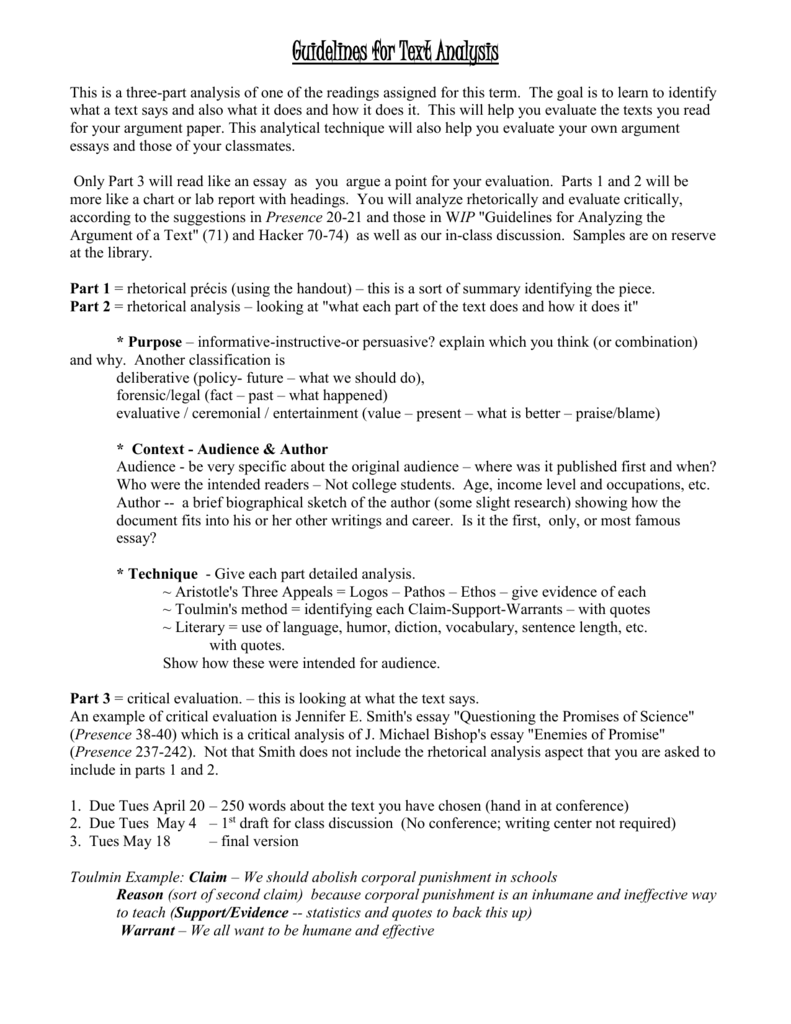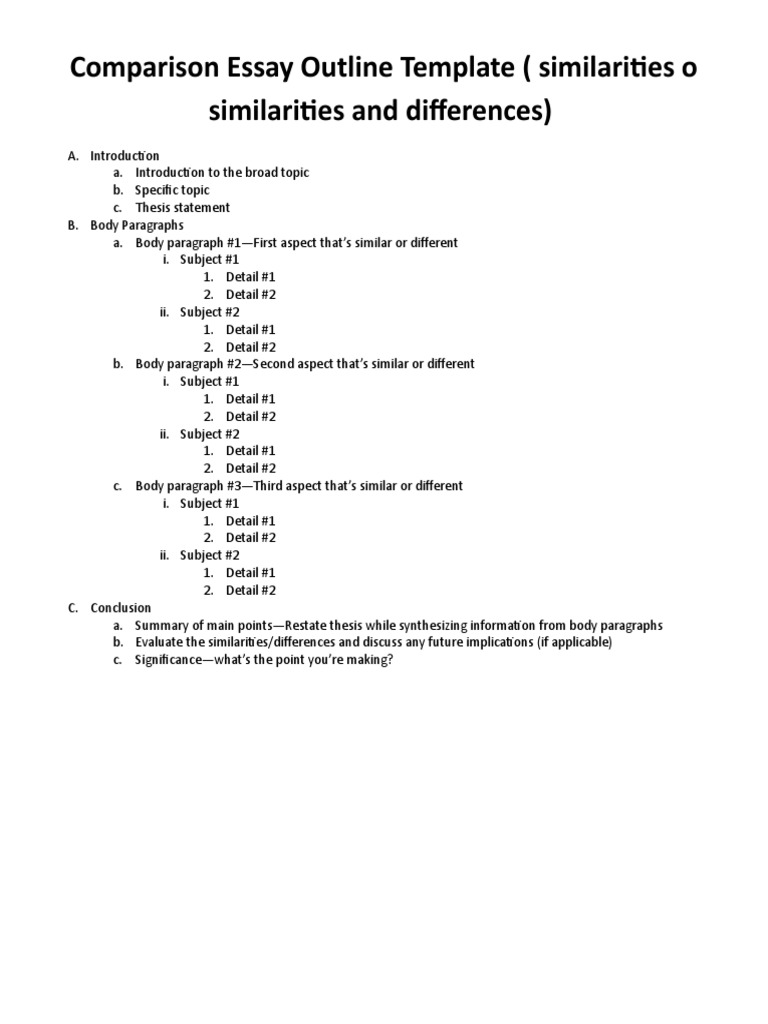
Step 1: Understand the Foundations of the Text Step 2: Identify Significant Themes Step 3: Choose Examples and Techniques Step 4: Carry Out Your Analysis Textual Analysis 23/10/ · Textual Analysis. a) of the eleven topics to select from, I have chosen the topic of gendered violence. b) Within this topic, my specific interest is the connection between gender When writing a textual analysis essay, keep these five things in mind: summary and context, statement of intent, evidence, and the bigger picture. Summary and Context. Textual analysis
How to Draft a Textual Analysis Essay? Insights and Examples
A text is any kind of written content. Periodicals, novels, scientific and literary papers, advertisements, and even text messages are kinds of texts. To analyze a text is to identify and explore every aspect of it. The art and science behind this is textual analysis. The topic of textual analysis is as broad as it is deep, so prepare to immerse yourself in the written word. Textual analysis is a method of studying a text in order to understand the author's deliberate meaning. This may sound grandiose but think of it this way: when you analyze part of a novel and write your conclusions, you are writing and explaining your understanding of it. You should always aim to help others to understand the meanings or possible meanings of the text. To accomplish this goal, you can use textual analysis to identify the who, what, when, where, why, and how of a text by sample textual analysis essay the following questions:.
Who wrote it and for whom? Consider the author and audience. What was written? Consider what type of text you are analyzing, e. When was it written and read? Consider the historical context. Where was it written and read? Consider the place and culture in which the text was written. Why was it written and read? Consider the author's intention behind writing the text. How was it written? Consider the purpose of a text. While the other five modalities focus more on objective history, the how begins to explore a more personalized view of the text, sample textual analysis essay, such as the word choice of the text itself, which is largely interpreted by the reader.
A more historical or scientific essay will often focus more on the first five modalities to support its points. The most in-depth form of textual analysis uses a thesis to explore not only the factual aspects of a text but also the parts people don't agree on. For instance, a thesis analysis might explore how well the writer accomplishes their goal, not merely how. Often, this complex form of analysis will compare the text in question with other relevant texts in order to draw a conclusion about it. While identifying the who, what, when where, why, sample textual analysis essay, and how helps us to understand a text, a textual analysis with a thesis helps us to understand the bigger picture around a text. A textual analysis with a sample textual analysis essay always draws a conclusion that could be contested.
However, you should attempt to argue your point in a way that makes it as resilient as possible to counter-arguments. A textual analysis often comes in the form of an essay with a thesis, but textual analysis can also be found anywhere. If at any point you analyze the who, what, when, where, why, and how of a text, it is a textual analysis. As such, a textual analysis essay is made up of a variety of interlinking analyses! Textual Analysis Essay is the targeted exploration of a text using a thesis. A textual analysis may also come in the form of a history or a deconstruction.
A history analysis is the explanation and analysis of a single text, with a focus on its place in time. A deconstruction analysis is the break down of a scene, rhetorical device, sample textual analysis essay, character, or any other piece of a text into its constituents i. A deconstruction is focused on the parts of the whole. In short, sample textual analysis essay that aims to classify or decode a text is a piece of textual analysis. When writing a textual analysis essay, keep these five things in mind: summary and context sample textual analysis essay, statement of intentevidenceand the bigger picture.
Textual analysis will summarize and contextualize the text, usually in or near the introduction, sample textual analysis essay. A textual analysis might introduce the temporal, cultural, or geographical context of the text. Depending on your audience, you might also include a summary of the text itself in order to jog their memory and remind them of the critical details you will be discussing. Textual analysis will include some sort of statement of intent. If the analyst is focusing on the history of the text, they might include why the contents of the text are important to preserve.
In the case of an essay, the analyst will include a thesis statement explaining why the text should be interpreted a certain way. Textual analysis will have some form of evidence. If the analyst is focusing on the history of a text, the analyst will frequently cite the historical text or related histories. In a deconstruction of a text, the analyst will repeatedly cite the focal text. In an essay, the analyst will use evidence from the text to support a thesis. Textual analysis will speak to the bigger picture, usually in the conclusion. Include this in your conclusion, alongside other avenues for future analysis. Remember: the bulk of your essay is meant to contribute to the conversation on the text.
Approach your textual analysis from the top down. Is the text you are analyzing nonfiction or fiction? Examples of nonfiction include memoirs, diaries, autobiographies and biographies, scientific papers, news articles, journals, and magazines. Any work that includes an imagined reality is a work of fiction, including any work that includes imaginative elements such as historical fiction. Other fiction examples include novels, novellas, short stories, fables and myths, epic poems and sagas, and many screenplays and scripts. Once you know whether the written work is fiction or nonfiction, move on to your analysis. Philosophical, religious, and spiritual texts blur the lines between fiction and nonfiction because reality itself is disputed in these types of texts, sample textual analysis essay.
Analyses of these highly contended topics are often found in sample textual analysis essay assignments because there are many aspects that can be questioned. When analyzing nonfiction, you are more likely to focus on the who, what, when, where, and why of a text. This is because nonfiction deals with the realities of the world. Your analysis of nonfiction could be very simple and draw close comparisons to an explanation. However, if you are writing an essay, your analysis will be more complicated because you will be using objective realities, facts, and evidence to support a conclusion. You would analyze the who, what, when, where, and why of a climate report sample textual analysis essay support your thesis that America needs to address global climate change.
Rhetoric is the convincing way an author makes a point. It can also be described as a rhetorical mode. You should analyze multiple rhetorical modes to be as convincing as possible, sample textual analysis essay. When analyzing fiction, you are more likely to focus on how a sample textual analysis essay conveys an idea. This is because a writer has invented all aspects of the story. The story the author has written has its own answers to the questions "who? So, when you unpack the how of a piece of fiction, you are unpacking an entire fictional reality as well. Every aspect of this reality has been constructed by the author using words. This leaves a lot for you to analyze, including the author's relationship between their own reality and their fictional reality.
Textual analysis is really like exploring an all-new world! Some examples of rhetoric that a fiction author might employ are themes, mood, descriptions, specialized word choice, syntax, and narration. Because textual analysis is such a broad category of writing, you will find that the strengths and weaknesses of textual analysis lie with specific textual analyses rather than the form of textual analysis itself. When writing your own textual analysis, keep these do's and do not's in mind:. A primary source could be the text you are analyzing itself or a review, article, or interview regarding the text written near the time the text was first introduced.
Primary sources are a great way to understand the historical context of a text and will bolster your introduction and body paragraphs. Your evidence should be objective and logical. Unless your thesis involves how well a text was received, people's opinions are not a great source of support for your essay. When you are drawing a debatable conclusion, remember to cite your sources. Evidence is only helpful if it is verifiable. Focus on one or just a few aspects. As a student, you will never write a textual analysis, or even a history, that covers every aspect of a text. If you try, sample textual analysis essay, you will end up writing a bland, short summary or a history sample textual analysis essay probably adds very little to the conversation surrounding the text.
Instead of analyzing all of Alice's Adventures in Wonderland at once, for example, analyze a few of Alice's encounters that show Lewis Carroll's love of numbers. Here is an example of how to analyze a short excerpt from a story, something you are likely to be asked on standardized and timed tests, as well as in your take-home essays. In this case, the writer presents a textual analysis of a passage from the opening narration of Charles Dickens's A Christmas Carol :. Text Passage: "Marley was dead: to begin with. There is no doubt whatever about that. The register of his burial was signed by the clergyman, the clerk, the undertaker, and the chief mourner.
This tactic of misdirection pays off with a surprise when the reader learns that Marley is anything but gone and departed. In the example, the writer of the textual analysis has chosen to focus on the following aspects to analyze how the text was written and explain and uncover the author's meaning sample textual analysis essay the passage from A Christmas Carol :. To write a textual analysis, consider the who, what, when, where, why, sample textual analysis essay, and how of the text you are analyzing, sample textual analysis essay. Analyze the structure, central idea, sample textual analysis essay, characters, setting, vocabulary, rhetoric, and citations of a text.
In most sample textual analysis essay, a textual analysis does not include an introduction and conclusion. True or false?
Text Analysis
, time: 2:41Textual Analysis | Guide, 3 Approaches & Examples
23/10/ · Textual Analysis. a) of the eleven topics to select from, I have chosen the topic of gendered violence. b) Within this topic, my specific interest is the connection between gender Step 1: Understand the Foundations of the Text Step 2: Identify Significant Themes Step 3: Choose Examples and Techniques Step 4: Carry Out Your Analysis Textual Analysis When writing a textual analysis essay, keep these five things in mind: summary and context, statement of intent, evidence, and the bigger picture. Summary and Context. Textual analysis

No comments:
Post a Comment